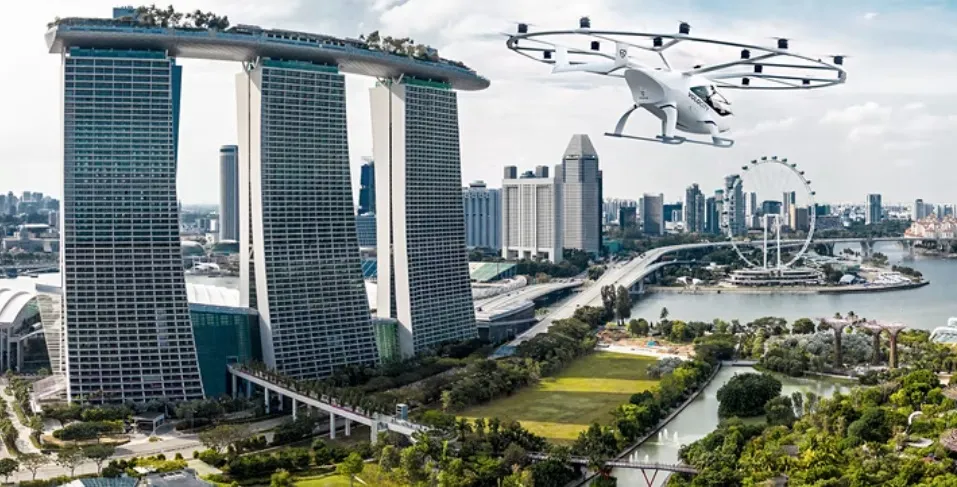
Volocopter has partnered with Singapore’s Institute of Technical Education (ITE) to launch a VoloCity public exhibition in the city-state.
It will feature the company's commercial air taxi model and is Volocopter's first long-term public exhibition anywhere in the world.
The interactive exhibit features information on the urban air mobility (UAM) sector, plus a 3D VoloPort model and offers visitors the chance to sit in the VoloCity at the Aerospace Hub, ITE College Central, to experience it for themselves.
To take a free tour, click here.
Singapore trade minister Gan Kim Yong said: “Singapore welcomes innovative companies like Volocopter which seek to build entirely new industries here. We are excited about the prospects of developing an Advanced Air Mobility (AAM) ecosystem in Singapore, and hope that through this exhibit, the public can learn more about this new form of urban mobility.”
Singapore is one of the first launch cities for the German firm, which conducted Asia’s first crewed public test flight of an air taxi in a city centre over Singapore’s Marina Bay in 2019.
It is committed to launching UAM services in Singapore "in the next couple of years" and suggests that this could create SGD 4.18 billion in cumulative economic benefits and create up to 1,300 jobs in Singapore by 2030.
Christian Bauer, chief commercial officer of Volocopter, said: “Our latest local market survey showed a significant uptick in the proportion of respondents who are excited to try an air taxi service. We hope to increase public awareness and education on this new form of mobility and the many ways it will benefit Singapore."
With two seats and 18 rotors, the fully-electric VoloCity is Volocopter’s first commercial product and is currently working toward achieving certification from the European Union Aviation Safety Agency.








